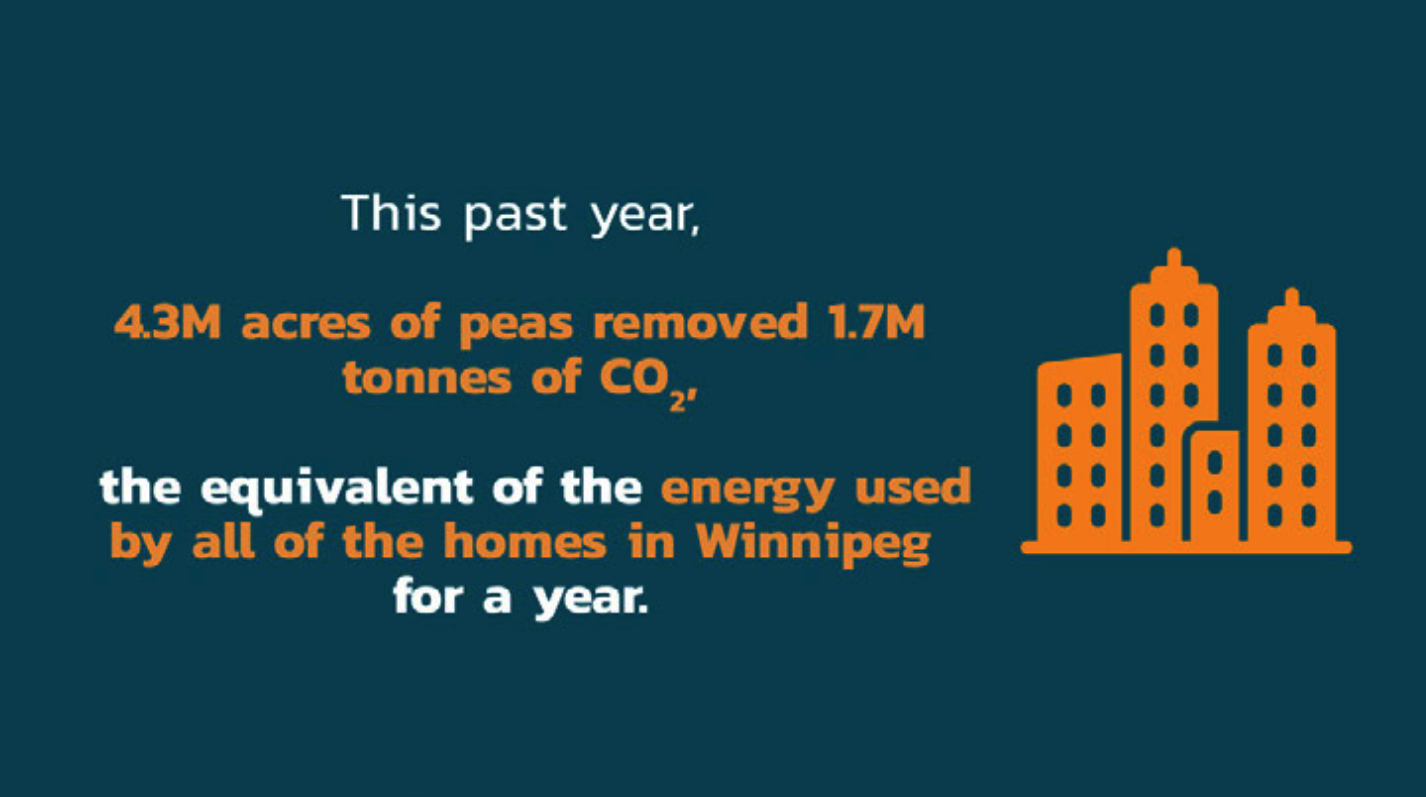Denis Tremorin, Director of Sustainability, Pulse Canada
THE BENEFITS OF pulses in crop rotations are well known from an agronomic perspective, in particular the nitrogen- fixation abilities of pulses that reduce the nitrogen fertilizer needs of Canadian farmers. The unique capacity of pulses to fix their own nitrogen from the air provides a major greenhouse gas benefit, and has been well documented in Canadian research studies. Additionally, with huge contributions to Canada’s GDP and economic output and with providing full-time work to almost 26,000 Canadians, the economic benefits of pulse production cannot be ignored.
Within the context of the corporate and governmental focus on greenhouse gas emissions, pulses provide a major benefit by reducing greenhouse gas emissions from Canadian agriculture. This is particularly relevant with the federal government target of reducing nitrogen fertilizer emissions by 30 percent by 2030. As farmers know, Canadian pulse production is already contributing to limiting emissions from nitrogen fertilizer.
The key question is, how much do Canadian pulses contribute to reducing greenhouse gas emissions – both on the farm and nationally? Research commissioned by Pulse Canada shows that Canadian pulses are some of the most sustainable crops in the world, as disclosed in the 2021 Canadian Pulse Industry Environmental and Economic Impact Report. The report focuses on the greenhouse gas impacts of pulse production in crop rotations and as individual crops in the rotation. These impacts are distinguished by pulse type (peas, lentils, dry beans, chickpeas, and faba beans) and by province. The greenhouse gas impacts of total production in Canada are also calculated, which provides an estimate of the national impact of the Canadian pulse industry to reduce emissions in a substantial way. The 2021 Canadian pulse crop reduced greenhouse gas emissions by up to 3.6 million tonnes of CO2 equivalents, which represents a reduction of emissions that accounts for more than a quarter of the direct and indirect emissions associated with applying nitrogen fertilizer, which was 12.75 million tonnes of CO2 equivalents in 2019.
 In addition to reducing greenhouse gas emissions, pulses are a protein source with a very low water footprint. Pulses such as peas, lentils, and chickpeas are well-adapted to semi- arid conditions and can tolerate drought stress. Pulse crops like peas and lentils also use water in a different way than other crops grown in rotation. They extract water from a shallower depth, leaving more water deep in the soil for the following year’s cereal or oilseed crop.
In addition to reducing greenhouse gas emissions, pulses are a protein source with a very low water footprint. Pulses such as peas, lentils, and chickpeas are well-adapted to semi- arid conditions and can tolerate drought stress. Pulse crops like peas and lentils also use water in a different way than other crops grown in rotation. They extract water from a shallower depth, leaving more water deep in the soil for the following year’s cereal or oilseed crop.
Including peas, lentils, or beans in crop rotations also has sustainability benefits for the crops grown after. Crops like wheat and barley produce higher yields and have higher protein when grown after pulses. This is due to the soil fertility, water, and soil microbial benefits of pulse crops.
Incorporating pulses in livestock diets also reduces the environmental footprint of pork and egg production. A recent life cycle analysis commissioned by Pulse Canada found incorporating peas into pork rations reduced the carbon impact of the feed by 28 percent, and the overall emissions of the pork by 18 percent.
Under a responsible growth scenario, as part of an economically viable rotation along with cereals and canola, pulse acreage could increase between 14.2 percent and 40.3 percent by 2030. This means Canadian pulses could remove a further 1.4 million tonnes of CO2 equivalents from our environment by 2030.
 While pulses pack an environmental punch, they are also an economic performer. The economic contribution of the Canadian pulse industry is also highlighted in the report. Over 26,000 pulse producers contribute to a pulse industry that generates an estimated $6.3 billion in economic output and $3.1 billion to the GDP of Canada.
While pulses pack an environmental punch, they are also an economic performer. The economic contribution of the Canadian pulse industry is also highlighted in the report. Over 26,000 pulse producers contribute to a pulse industry that generates an estimated $6.3 billion in economic output and $3.1 billion to the GDP of Canada.
In February 2023, Pulse Canada launched the Environmental and Economic Impact Report as part of its Impactful campaign. Through this campaign, Pulse Canada is positioning pulses in agronomically responsible rotations as one of the key environmental pillars of the Canadian agricultural system. Practices such as no-till, 4R Nutrient Stewardship, and integrated pest management practices are rightfully seen as agronomically responsible and environmentally beneficial, and this study shows that pulses in Canadian crop rotations should be included in this list. Pulse Canada and our members are using the report to help prioritize programs and issues for the Canadian pulse industry that require government attention and investment.
To date, government investments to help the sector seize sustainability opportunities have been provided through Sustainable Canadian Agricultural Partnership (Sustainable CAP) and Agriculture Climate Solutions via the On-Farm Climate Action Fund and Living Labs programs. The industry will continue to rely on the support of Sustainable CAP programming, such as the AgriMarketing, Science Clusters, and AgriAssurance programs to ensure work is being done to grow exports while lowering emissions.
The key takeaway is that federal and provincial governments should view any dollar invested in Canada’s pulse sector as a dollar invested in reducing Canada’s emissions. Growth in Canada’s pulse industry means lower carbon emissions and higher economic output, making Canada’s pulse industry a “green” investment.

